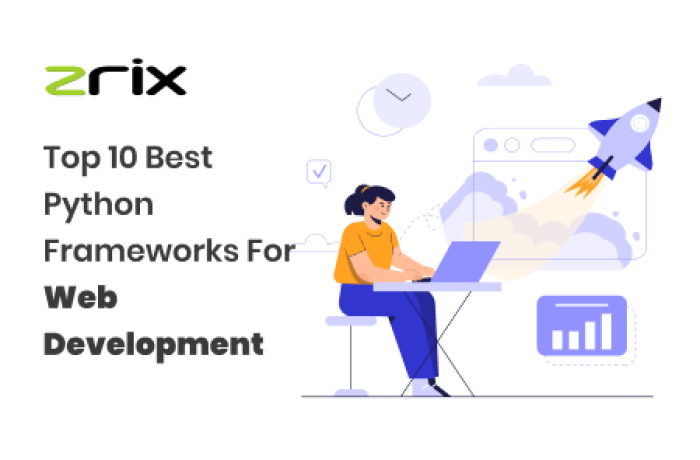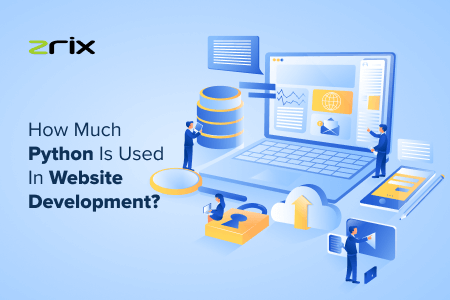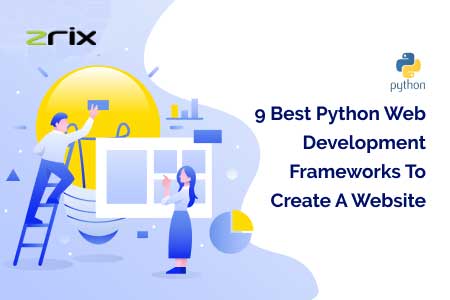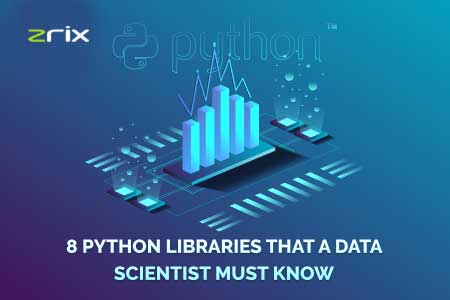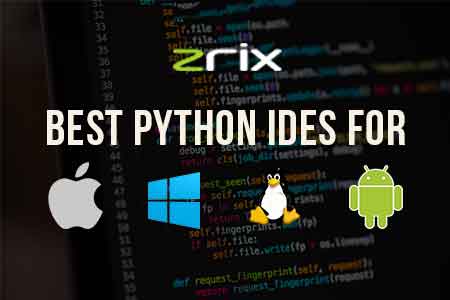Python is an undeniably high-level programming language with dynamic composing and translation. Additionally, being the main programming language in the web and app development industry, its establishment is dependent on OOPS - Object Oriented Programming System!
Because of its exceptional linguistic structure, it appears to be unique from different coding languages like C, C++, and Java. Also, it's a simple-to-learn language.
Most programmers use Python web development frameworks to make sites and create applications. Also, the Python web frameworks give a characterized design as the attention is altogether on the center of coding components.
Let's check different types of frameworks in Python!
Quick Navigation
To make a site, you need a structure where you can code, modify, and incorporate online viewers according to the intricacy of your applications. In this article, we will talk about some usually utilized Python frameworks for app development and web development.
The Python structures' sites are of two types, full-stack, and non-full-stack websites. Fundamentally, you can consider Python a full-stack programming language.
Subsequently, the rundown list in this article involves 10 Python frameworks used in every top web development service provider company. We should begin and figure out how to make a site by utilizing Python language!
Full-Stack Python Web Development Frameworks
The full-stack Python frameworks offer total help to developers and programmers! Likewise, Python libraries for web development and app development helps in structure approval, format design, structure generators, and so forth.
“Django, Web2Py, TurboGears, CubicWeb, Pylon, and Giotto are some normal full-stack Python frameworks for data science, AI, and development purposes.”
Django
Django is a free open-source framework launched in July 2005. When contrasted with different structures of Python, PHP, and so on it makes complex code sites and applications in less time without any problem.
With a model-view template layout design, it follows the concept of DRY (don't rehash/repeat the same thing) standard. Django has a wide assortment of Python libraries, and its emphasis is more on productivity, less coding, and reusability of modules, parts, and bundles.
Highlights of Django: URL directing, layout motor, ORM (object-relational mapper), validation instrument, and data set composition relocations.
Django upholds its stand in databases like PostgreSQL, MySQL, SQLite, and Oracle. Accordingly, Python site designers can move the code starting with one information base then onto the next.
“Django is a well-known Python framework used in Instagram, Disqus, Pinterest, Mozilla, Bitbucket, and The Washington Times.”
Web2py
Web2py is a web application Python structure, which is commonly open-source, free-to-use, and cross-platform. Clients can undoubtedly make dynamic web content in Python. It accompanies a code editorial manager, debugger, and sending device, just as tests and looks after applications.
Some Best Features of Python Web2py framework:
- Supports all operating systems
- Follow the MVC - model-view-controller
- Fewer problems in installation and configuration
- Best Cybersecurity measures
- Easily handle HTTP requests, cookies, responses, and sessions
- Support access control and internationalization
- Reads multiple protocols
TurboGears
Created by Mark Ramm and KevinDangoor, the TurboGears python framework for AI, app, and web development is an open-source, easy-to-use information-driven structure. Some of its features are the MVC pattern, multiple database support, and the packaging of numerous libraries.
Also Read: 10 Python Tips and Tricks To Make Python Programmers Life Easy
TurboGears parts like WebOb, Genshi, SQLAlchemy, and Repoze effectively build up those applications which need quick and quicker data set network in contrast with different systems.
Also, the TurboGears Python framework is a web server gateway whose job is to enable complex widgets in developer mode in their applications.
CubicWeb
It is one more open-source allowed to utilize python system to learn site improvement dependent on the information model. Created by Logilab, you can utilize it instead of isolating perspectives and models.
Various 3D shapes join each other to make some setup records, a data set, and a web worker.
Some CubicWeb Python web advancement structures are as per the following:
- Good security workflow, reusable components, supports multiple databases
- Supports Ontology Web Language (OWL) & Resource Description Framework (RDF)
- Using Embeds Relational Query Language (RQL), CubicWeb simplifies data related queries
Giotto
Giotto Python's development framework follows the MVC development and design model. Likewise, it isolates Model, View, and Controller components from one another to guarantee successful working for the website specialists, developers, engineers, and framework directors. Aside from this, Giotto contains regulator modules that empower the clients to make sites and applications.
Pylon
Pylon is a lightweight framework created in December 2010. It significantly accentuates the fast advancement of utilization following languages like Ruby, Python, and Perl.
Thus, it gives an adaptable environment for web improvement and app development. The Pylon structure is currently converged with the Pyramid system named as a Python structure for testing.
These full-stack Python structures in web improvement are generally utilized by full-stack committed web and app programmers to finish their undertakings on the schedule immediately.
Non-Full-Stack Python Web Development Frameworks
The non-full-stack structures never give extra functionalities and highlights to the clients. Subsequently, it gets essential to recruit Python designers who are learned and can add more code physically. A couple of regularly utilized Python systems under this classification are as per the following.
Bottle
It's a Python microframework for sites, created by Marcel Hellkemp. Being simple to utilize the lightweight system, it makes large forms of little web applications and makes a single source code. In addition, it is totally reliant upon the Python Standard Library.
Some fundamental Bottle structure highlights are:
- Inherent HTTP worker/WSGI workers
- Allow the clients to get to frame information, treats, record transfers, and HTTP-related metadata.
- Additionally, give URL-boundary support
- Backing modules and various data sets.
CherryPy
Remi Delon established CherryPy open-source, object-based Python web frameworks, which has its own multi-strung webserver to make web applications. CherryPy applications run on any Python-supporting working frameworks.
Also Read: 9 Python Development Frameworks To Learn For Web Development
Some CherryPy highlights are as per the following:
- It contains HTTP/1.1-consistent, WSGI pooled web server and supports Apache and IIS.
- Permits HTTP workers to run at the same time
- It contains a few devices for reserving, encoding, approval, and so on
- Additionally, support profiling, and testing naturally
- CherryPy has an implicit module framework.
Sanic
Sanic is likewise an open-source framework that is nearly fast and high-performing than others. Additionally, it is extraordinarily intended for speedy HTTP reactions. Yes, it has a surprising record to deal with 33,342 requests of HTTPS in a second. Each non-full stack Python framework has a few advantages and disadvantages at various development stages.
Falcon
Falcon is a WSGI library for building quick web APIs and application backends. The structure has CPython 3.5+ and PyPy 3.5+ help. Also, it supplements more broad Python web systems by giving additional dependability, adaptability, and execution.
A portion of its highlights are-
- It is an exceptionally advanced and extensible codebase
- Simple admittance to headers as reaction objects
- The framework handles middleware parts and snares
Conclusion
Above were the best Python frameworks for web development, which even helps in data science, AI, and mobile app development.
Which Python framework do you use? Mention in the comment section below!
We hope that you really liked our list and description of 10 Python frameworks. And you also found it valuable. In case if you wish to make an application software or website in Python then do visit our Python app development company in the USA.
Brainstorm all your doubts and let’s build the best project in Python!
